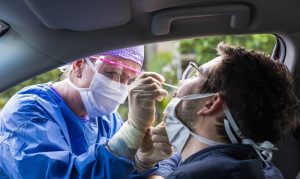The EEG represents a basic examination in neurology as it is non-invasive and easy to perform. It is used to identify pathological changes in the electrical activity of the brain.
Description
Baseline EEG and after sleep deprivation are performed outpatient. The examination is performed by a neurophysiopathology technician and interpreted by a neurologist expert in electroencephalography.Sleep deprivation, a method of activation, is used in cases where any anomalies of dubious interpretation, at the basal EEG, require a diagnostic study Seer Medical.
The execution of the examination has no contraindications in pregnant women.

It is not necessary to be accompanied.
It is an examination that can be of an urgent nature in states of epileptic disease and in acute states of coma.
It is also performed in intensive care for patients with severe brain damage and, as required by law, for the assessment of brain death.
Patients to whom it is addressed
Patients with episodes of altered state of consciousness, epilepsies, head injuries, brain infections, memory problems, dementias, cerebrovascular disorders, sleep disturbances.
Sometimes the EEG is used as a screening to rule out, rather than confirm, the presence of changes.
Execution
The recording of the electrical impulses produced by the activity of the brain takes place by means of electrodes placed on the scalp and held in place by an elastic cap. A small amount of gel is injected into the electrodes to ensure good electrical conduction.
During the examination, to check the reactivity of the brain, the technician asks the patient to open or close their eyes, breathe deeply for three minutes or look at a lamp that emits a series of rapid flashes.Electroencephalography does not cause any discomfort or risk for the subject, and takes about 30 minutes.
Preparation
The basal EEG does not require any special preparation.In the case of sleep deprivation EEG, the patient must remain awake the night before the examination.Fasting is not necessary for the examination and the patient can also take the usual medications.
Required documentation
Obligation of the attending physician for the agreed access;
Any health documentation.
After the examination
At the end of the examination, the gel is removed from the patient’s head and a subsequent hair wash will be necessary to remove all traces.The resumption of usual activities can be immediate.
Modern Neurodiagnostics constantly requires the use of amplifiers with high technical specifications, especially in sampling frequency and resolution. The new Be Plus Pro amplifier is the answer to these growing needs, made possible using a high sampling frequency, at real 32KHz usable in different channels with maximum flexibility. In this way it is possible to have an accurate acquisition of brain signals without using any analog filter.























